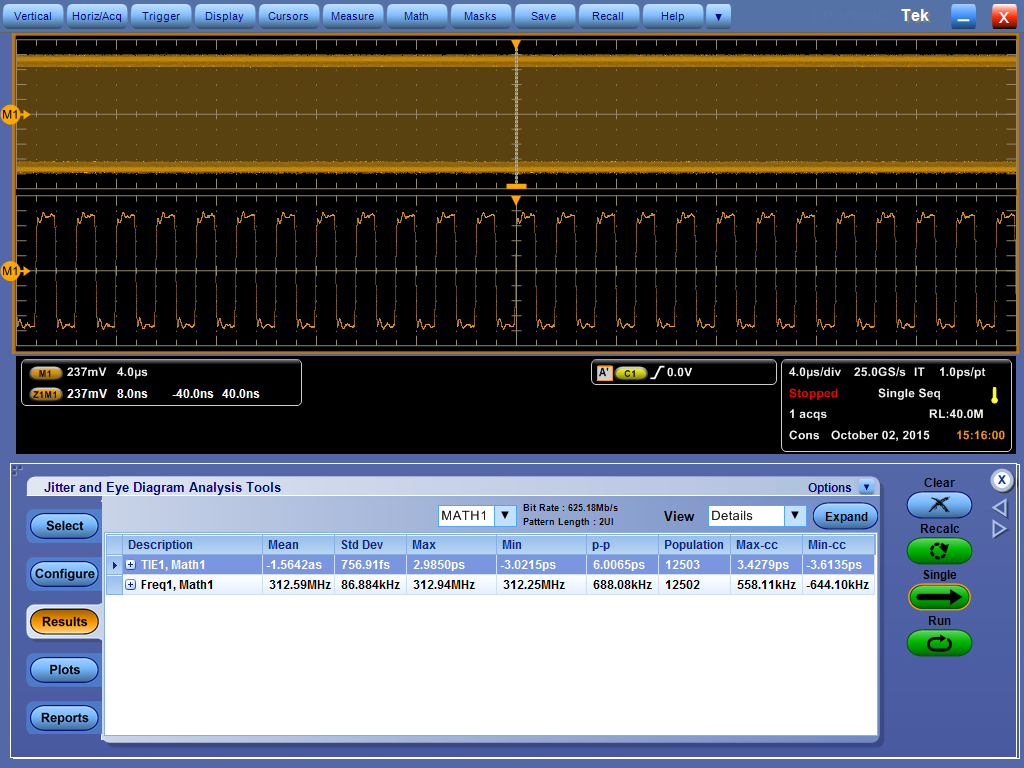SNAA285 October 2015 LMK61E2
2
Tektronix uses time interval error to measure JNF. The typical value of JNF reported in the oscilloscope datasheets from Tektronix correspond to the longest record length and maximum sample rate setting. The typical Jitter Noise Floor (RMS TIE) for DPO70804C is 450fs.
The unfiltered TIE measurement result for LMK61E2 using DPO70804C oscilloscope is shown in Figure 2
 Figure 2. Unfiltered TIE Measurement Results
Figure 2. Unfiltered TIE Measurement Results The total measured RMS TIE is approximately 757 fs RMS. The oscilloscope contributes roughly 450 fs RMS TIE. The RMS TIE due to the device (LMK61E2) can be calculated to be approximately 608 fs RMS.
Please note that the above jitter specification applies to Tektronix real-time oscilloscopes. Agilent lumps all the jitter sources into a similar parameter called Jitter Measurement Floor. From the Agilent 90000 X-Series datasheet, the jitter measurement floor is specified by Equation 3.

The first term in Equation 3 corresponds to the noise influence due to the slew rate of the signal being measured. The second term represents the oscilloscope intrinsic noise. These parameters can be found in the oscilloscope specifications from the manufacturer website. Other scope manufacturers have their own specification that factors in the sources of jitter discussed above.